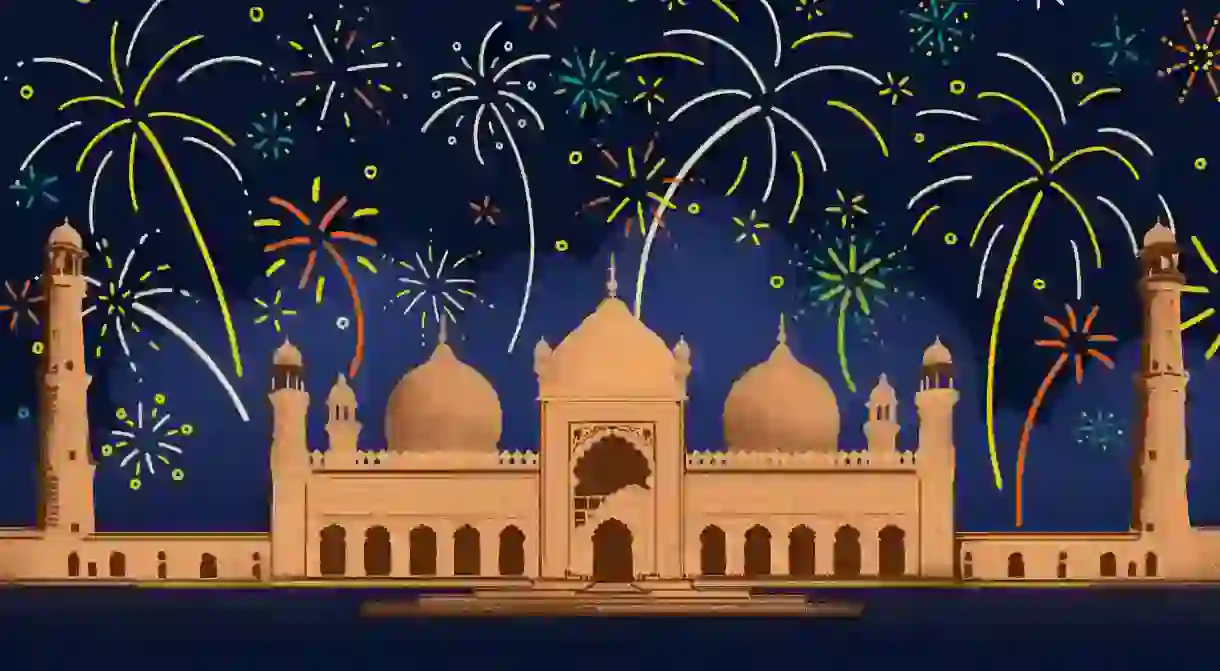What Exactly Is Eid-al-Fitr?

Muslims around the world celebrate the end of Ramadan with Eid-al-Fitr, but what exactly is the Islamic holiday?
What is Eid-al-Fitr?
Eid-al-Fitr (also written and pronounced as Eid-ul-Fitr) is the first of two Eids of the Islamic (lunar) calendar year. It rounds off the month of Ramadan, which Muslims observe every year to acknowledge Allah’s revelation of the Quran to the Prophet Muhammad.

Not to be confused with Eid-al-Adha, this Eid comes after the holy month of Ramadan, when many Muslims will not eat or drink during the daytime for a 29- or 30-day period. It’s part of Sawm (fasting) commitment, one of the five pillars of Islam.
The holiday is all about the breaking of the dawn-to-dusk fast and is celebrated on the first day of Shawwal (the 10th month). It falls approximately 11 days earlier than the one the previous year when following the Gregorian (solar) calendar.
When is Eid-al-Fitr?
The exact date is never certain far in advance, as religious authorities in various countries rely on the sighting of the Eid crescent moon to announce when it will officially begin. It can be delayed by a day if the sky is too bright when the moon is out, or if clouds obstruct it. This is also the reason Ramadan can start on different days in different parts of the world.
People are not allowed to fast on this day of the year, even if they want to continue. Check out our article on Ramadan traditions from around the world.
Why is Eid-al-Fitr celebrated?
Eid-al-Fitr is regarded as a time to celebrate, with Muslims gathering their friends and family to show gratitude toward God following the previous month of reflection. The holiday serves as a great reminder for Muslims to be grateful for what they have, and to share with those who may be less fortunate.

How is Eid-al-Fitr celebrated?
As well as giving thanks, Muslims give an obligatory payment to charity (zakat al-Fitr), but this one is a smaller donation compared with the usual 2.5-percent zakat that wealthy Muslims are taxed. This is another of the five pillars of Islam. In addition to these payments, some Muslims take the initiative to work voluntarily at soup kitchens and hand out their own food to those in need of relief.
As with Eid-al-Adha, gifting is a big part of Eid celebrations. Children receive eidia offerings in money bags, and sweet treats such as cookies and dates are exchanged among loved ones, neighbours, colleagues, friends and even strangers. Family members will also buy one another presents, although most of these are saved for the youngest members of each family.
Countries across the world hold huge events to celebrate Eid-al-Fitr. Days of fireworks shows are especially popular in the United Arab Emirates and Saudi Arabia as people take the opportunity to spend quality time together.
What does the ‘Eid Mubarak’ greeting mean?
You’ll hear Muslims wishing each other ‘Eid Mubarak’, which refers to having a blessed day during Eid. It is said on both Eid days and is the expected greeting when meeting a fellow Muslim for the first time on Eid. Many non-Muslims who are familiar with the phrase and meaning of it also offer ‘Eid Mubarak’ as a greeting on this day when they see Muslim friends and colleagues.
Eid prayers
Muslims usually dress up to attend their local mosque, where as well as taking part in prayers, it’s a time for many people to have the first breakfast during sunlight hours they’ve had in a month. Before dawn, the Salaat ul-Fajr prayer takes place, and then it’s time to bathe before the Eid prayer, also known as Salaat al-Eid.
As Salaat al-Eid is performed only twice a year, the imam leading the congregation will usually explain how to perform this particular prayer before it begins.
Additional reporting by Cassam Looch













